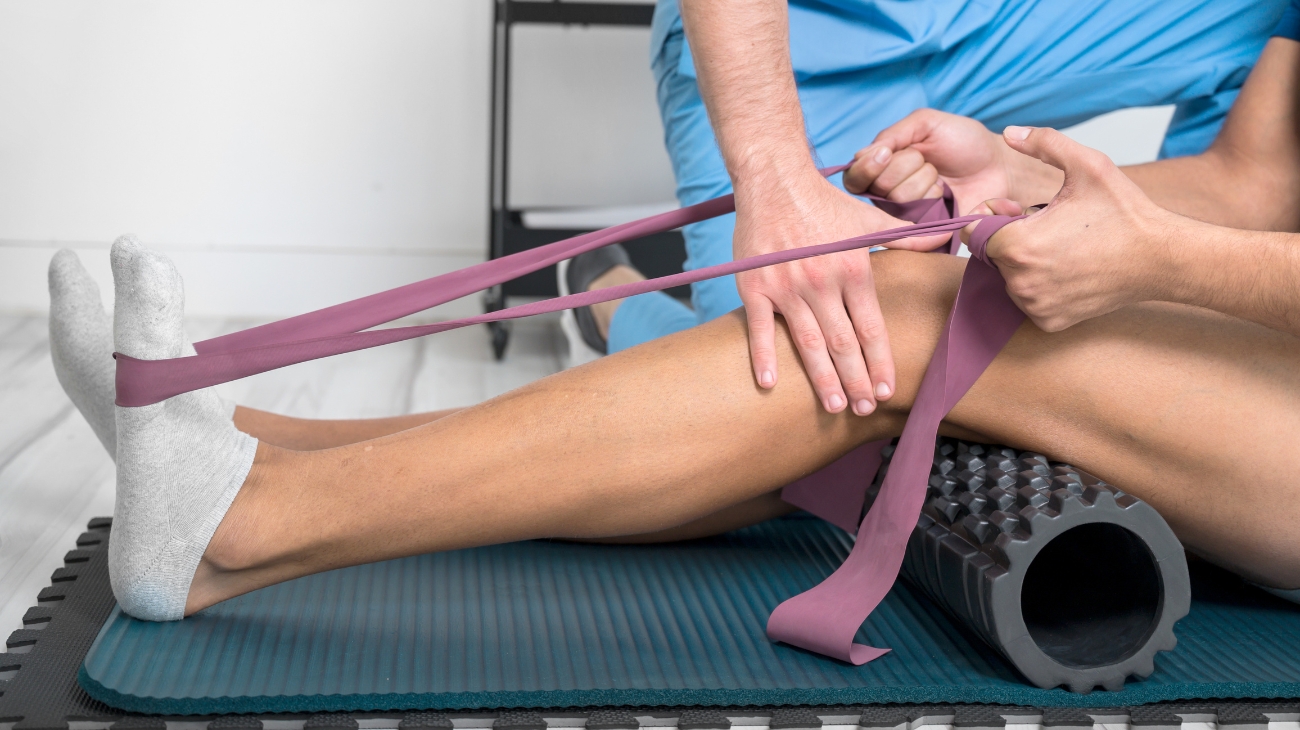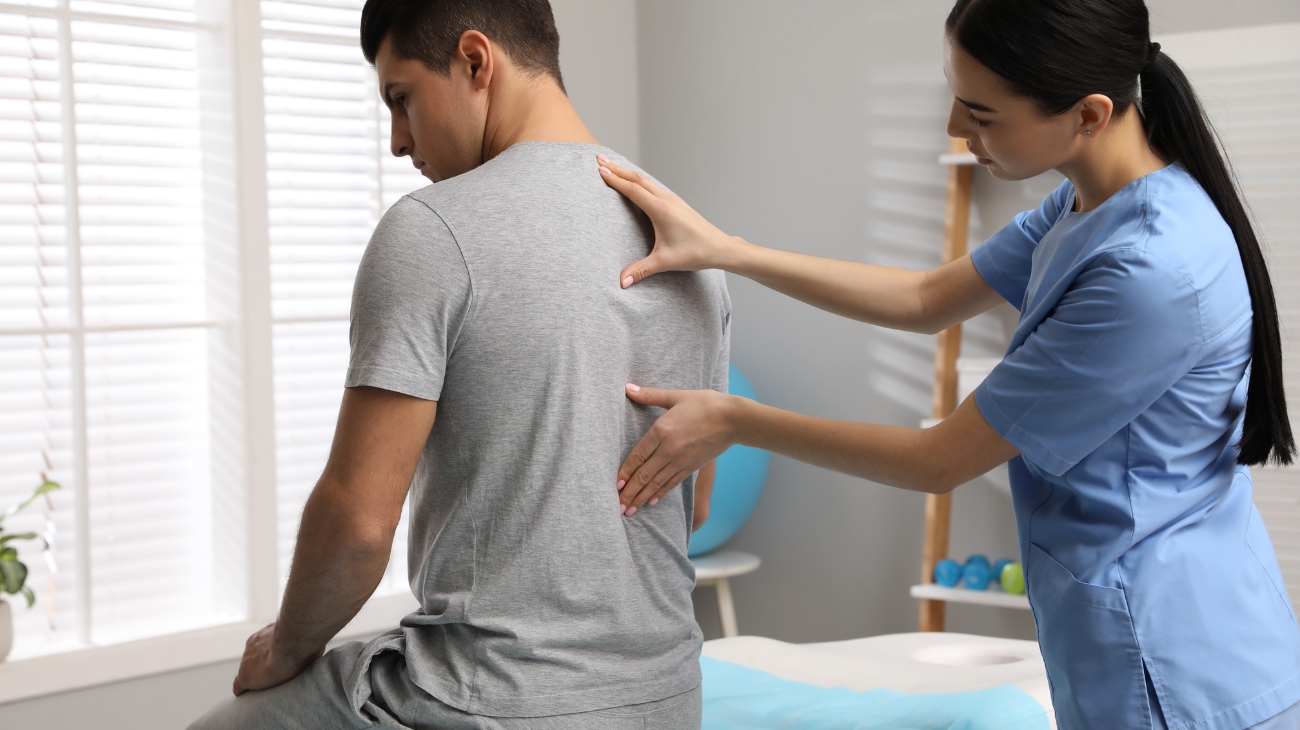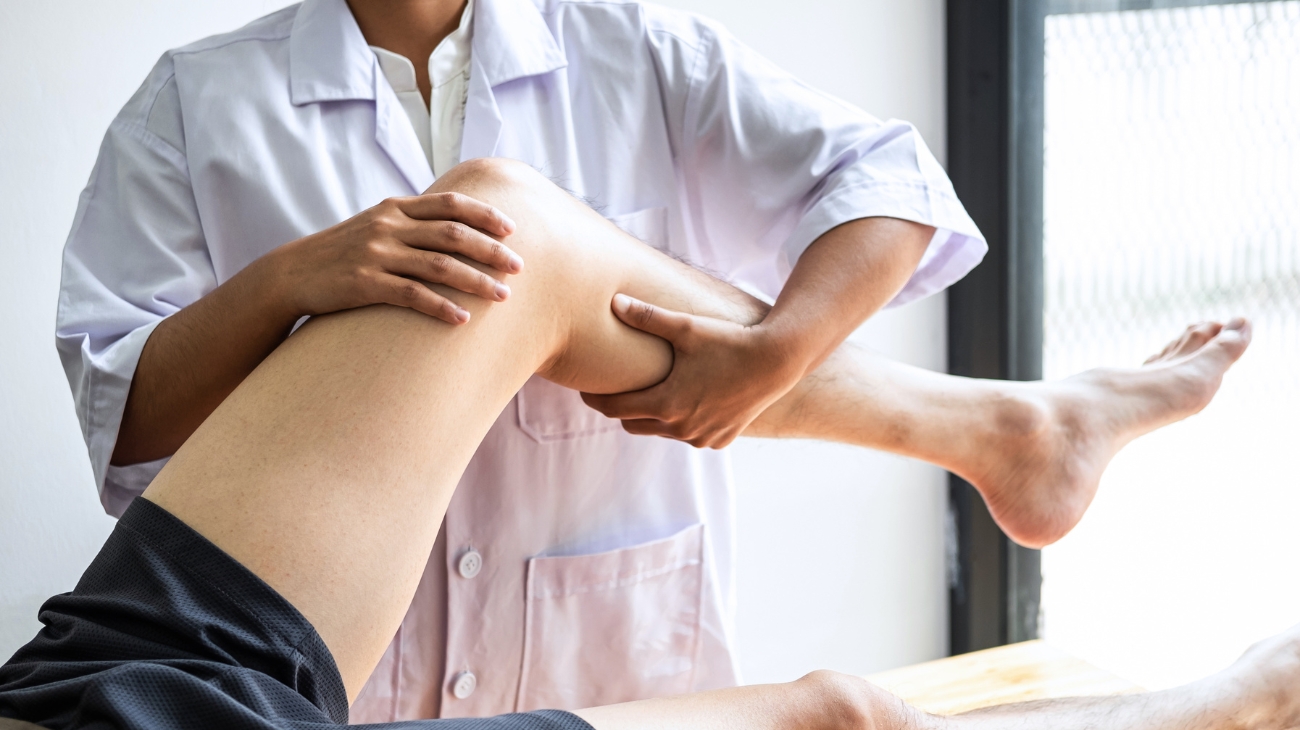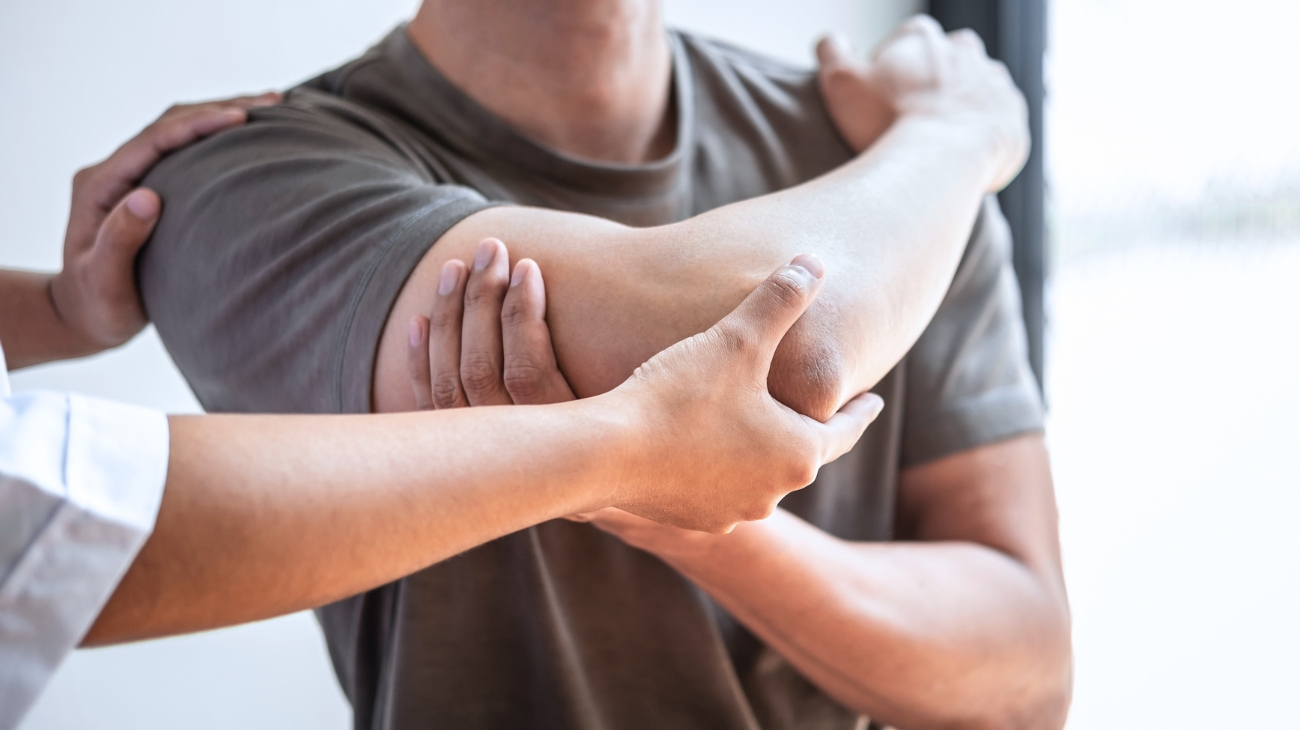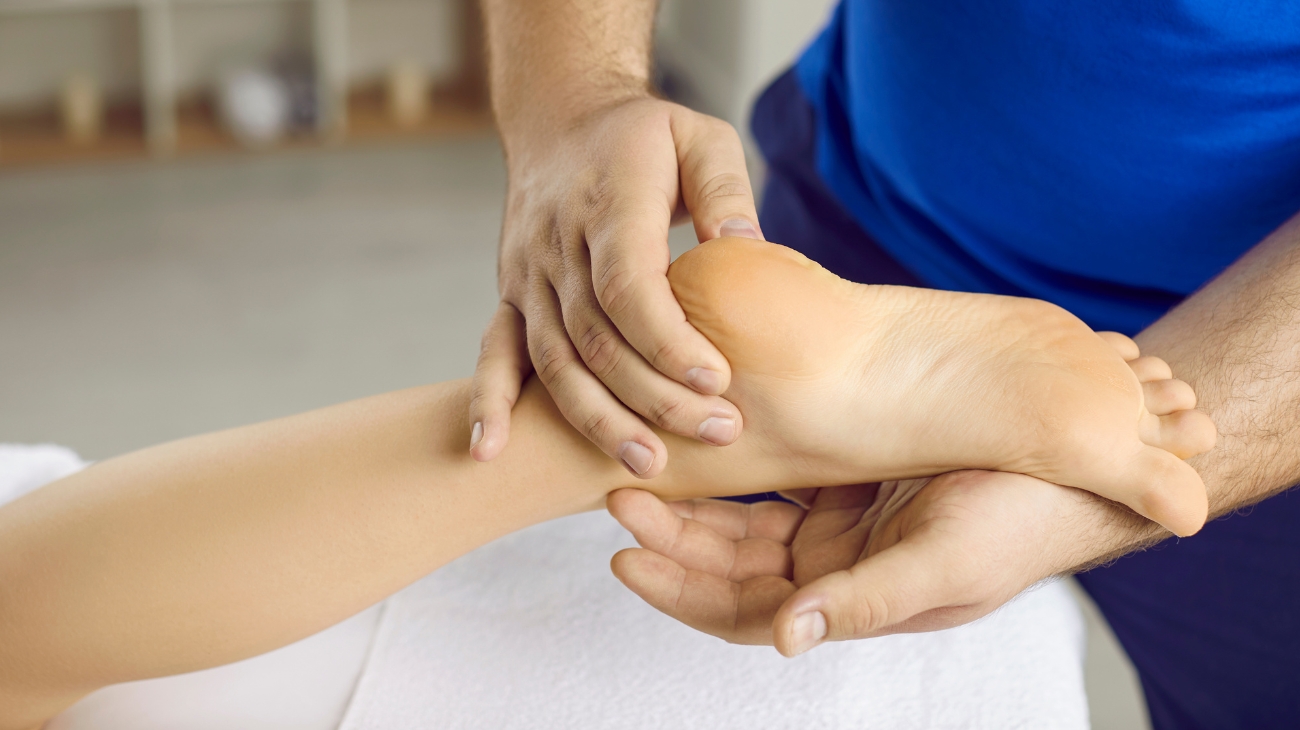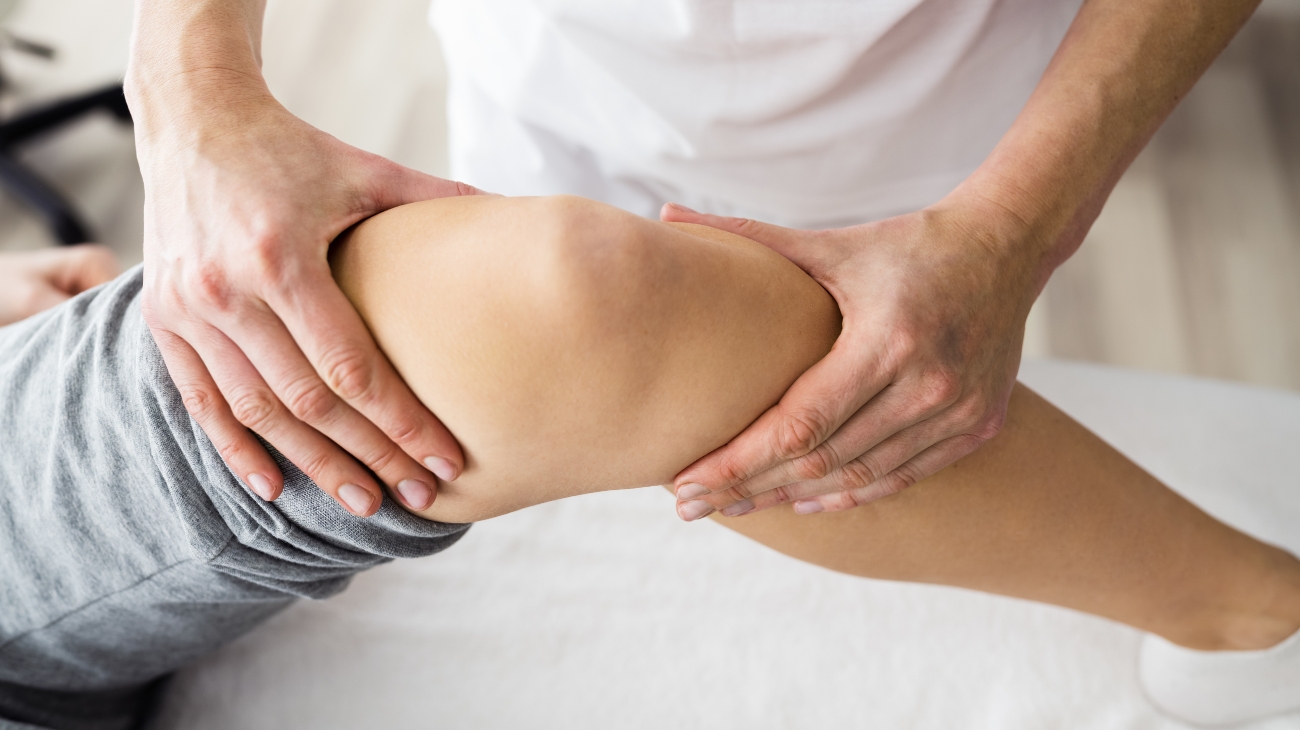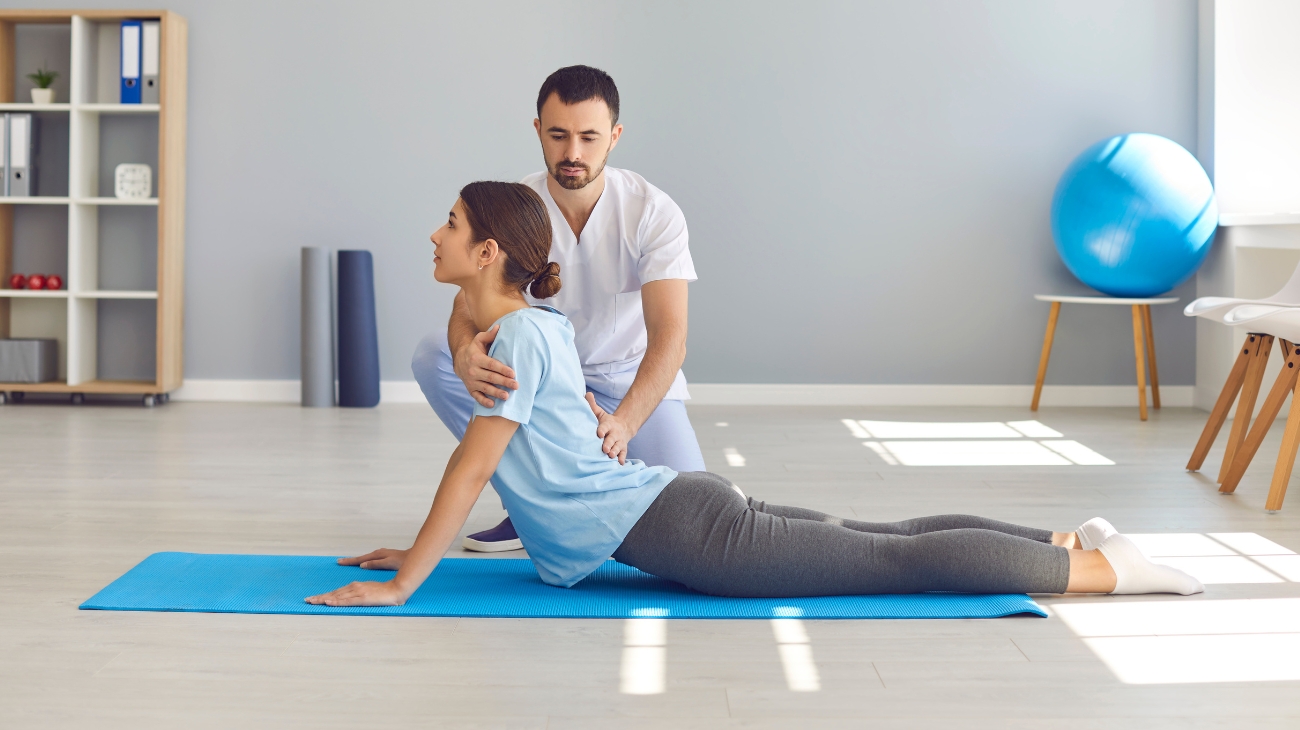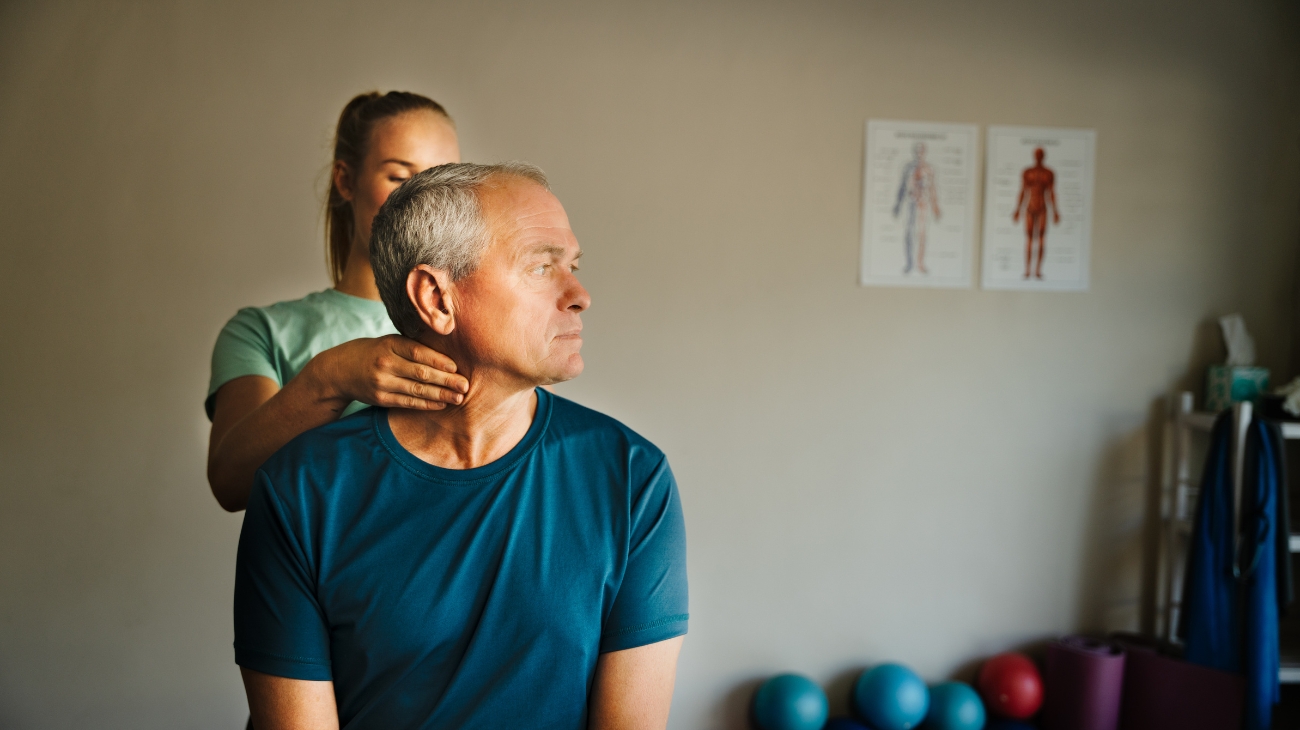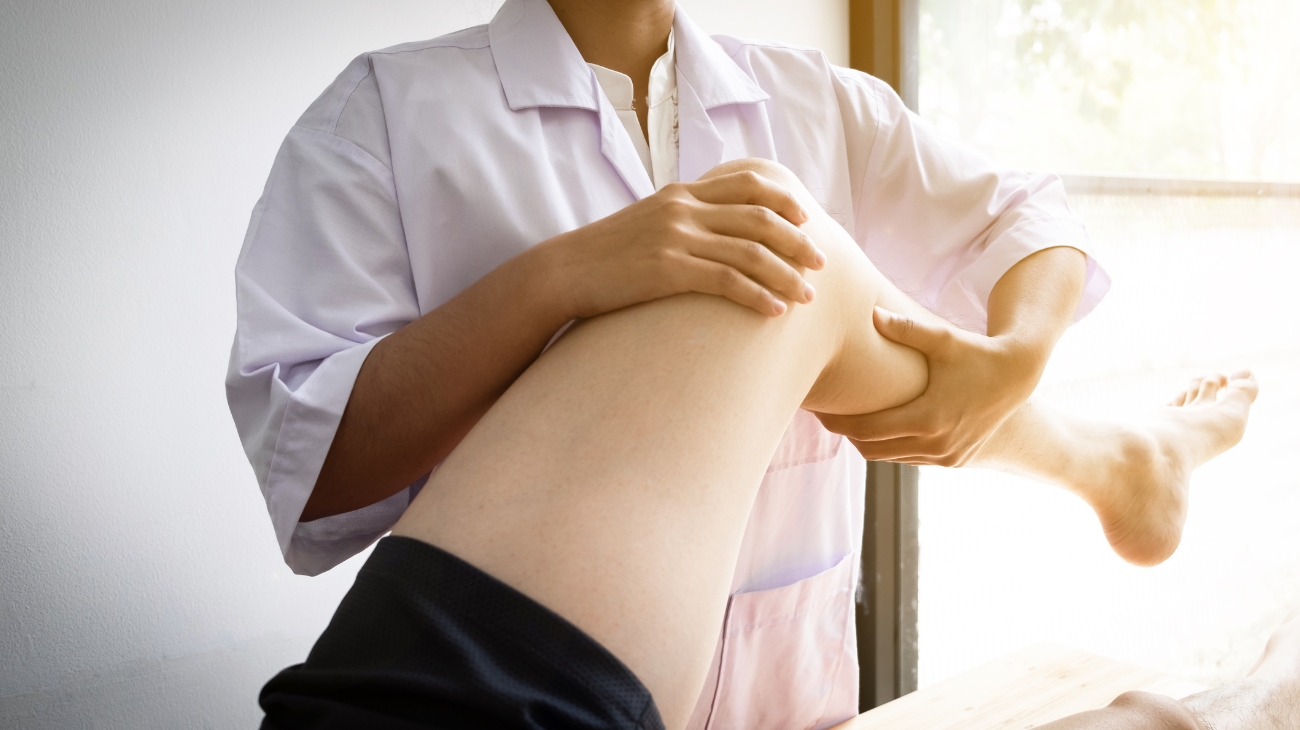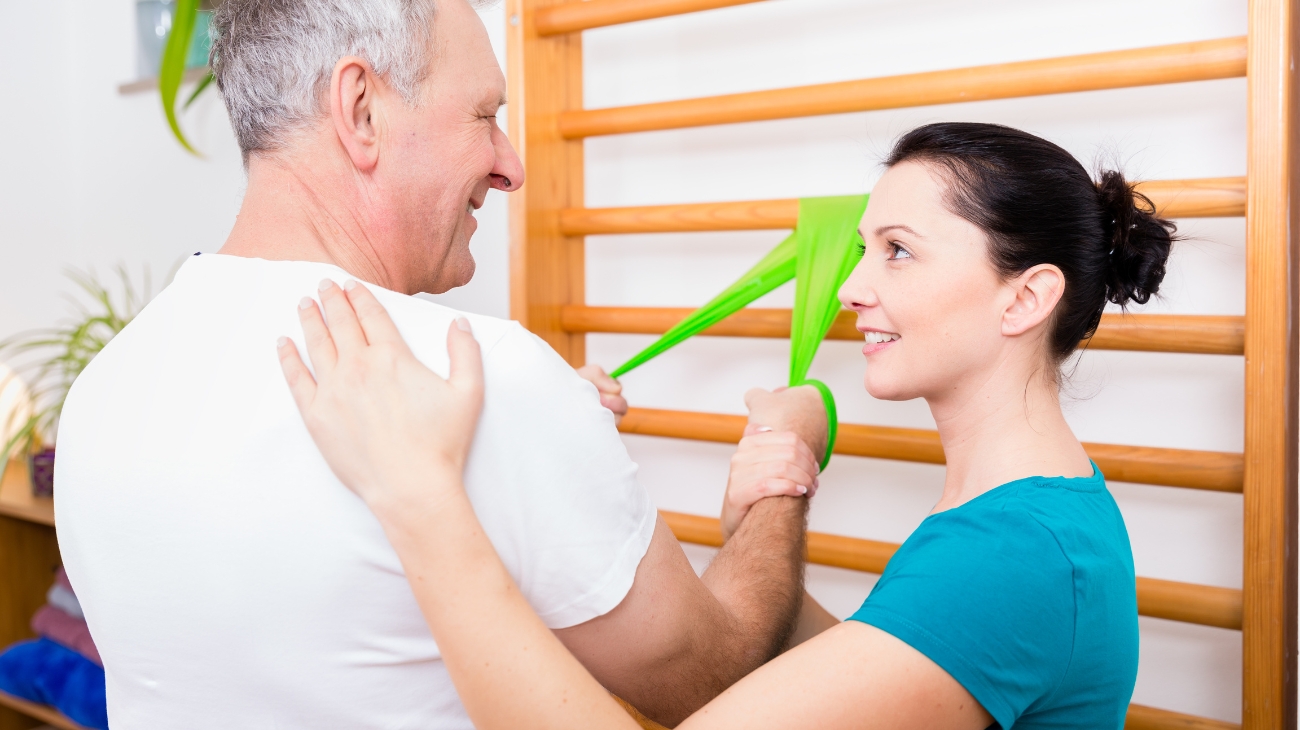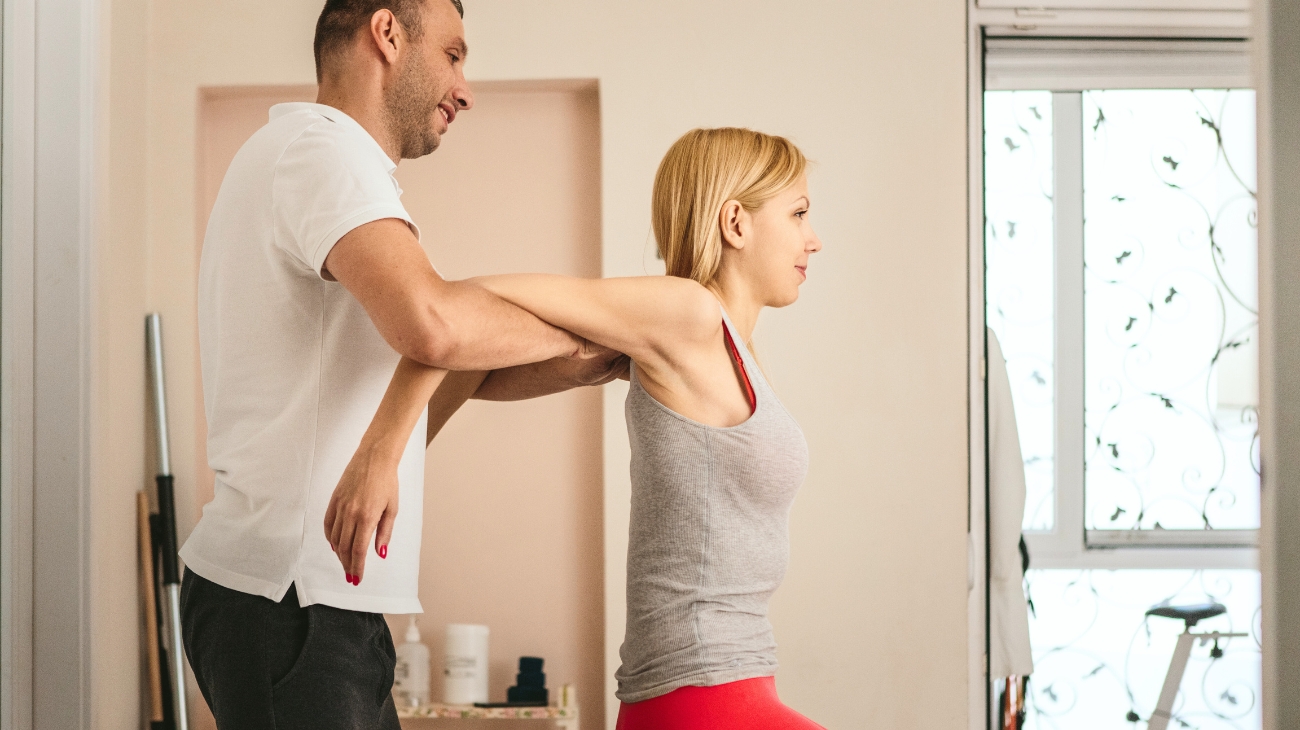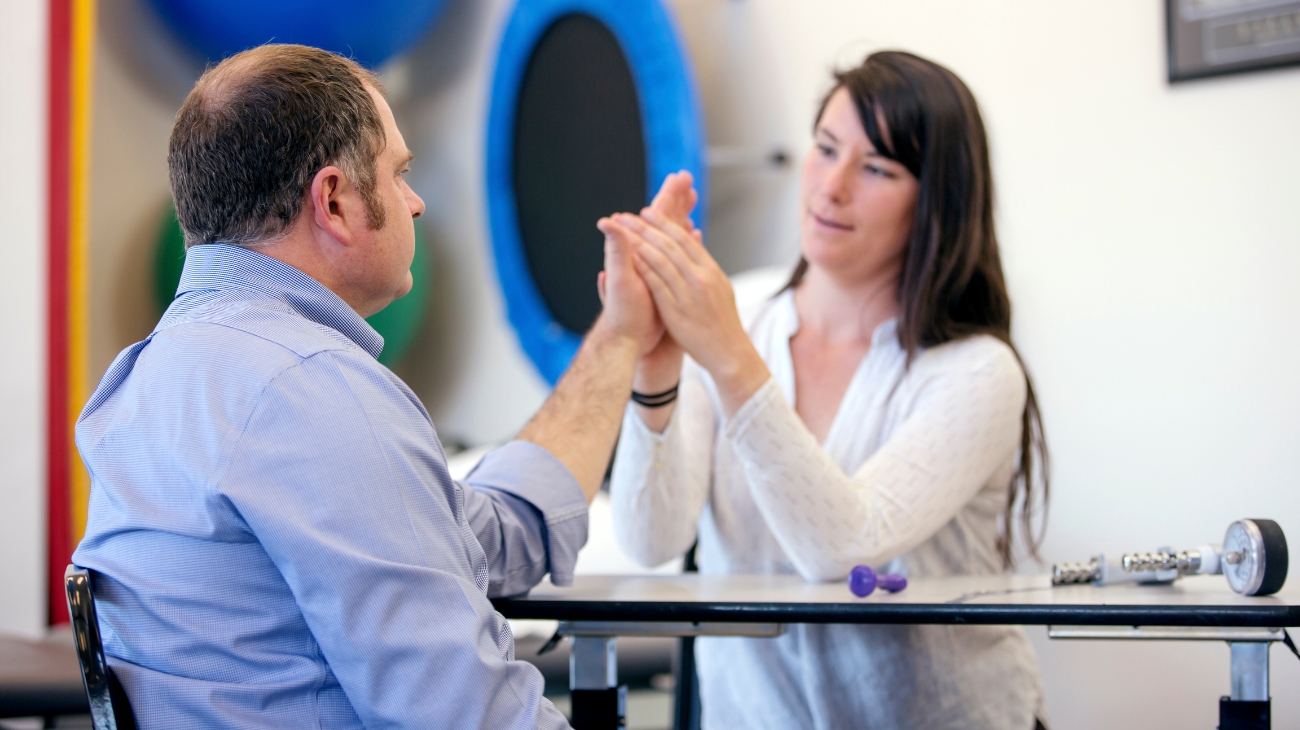Quadriceps are an essential muscle group located in the front of the thigh that play a significant role in movement and stability of the knee joint. Injuries to this muscle group are common, particularly in athletes or individuals who participate in activities that involve running, jumping, or sudden changes in direction. The quadriceps muscles are also critical in the recovery process following knee surgeries or injuries, making proper rehabilitation exercises essential.
Knowing the best exercises for quadriceps rehabilitation and pain relief is crucial in promoting healing and restoring function to the affected area. Rehabilitation exercises can help to reduce pain and inflammation, improve range of motion, and increase strength and stability of the quadriceps muscles.
Best quadriceps rehab and mobility exercises
By strengthening these muscles, individuals can improve their overall knee joint health, prevent future injuries, and return to their regular activities with reduced pain and improved function. Additionally, by working with a physical therapist or healthcare provider to develop a tailored rehabilitation plan, individuals can receive personalized care that addresses their specific needs and promotes optimal outcomes.
1 - Box Step-Up
The Box Step-Up is a versatile lower body exercise that targets the legs and glutes while also improving balance and stability:
- Stand in front of a sturdy box or bench.
- Place one foot on top of the box, ensuring your entire foot is supported.
- Engage your core muscles to maintain balance.
- Push through the heel of the elevated foot and step onto the box.
- Fully extend the elevated leg and stand upright on the box.
- Step back down, leading with the elevated foot, and return to the starting position.
- Repeat the movement on the same leg for a set number of repetitions before switching to the other leg.
- Perform 2-3 sets of 10-12 repetitions on each leg.
Muscles involved:
- Quadriceps: These muscles are responsible for extending the knee during the step-up.
- Gluteus Maximus: The largest gluteal muscle aids in hip extension.
- Hamstrings: These muscles assist in knee flexion and hip extension.
- Calves: The calf muscles stabilize the ankle during the step.
- Adductors: Inner thigh muscles contribute to hip stability.
2 - Knee flexion with heel slide (Bands)
Knee Flexion with Heel Slide using elastic bands is an effective exercise for improving knee mobility and strength:
- Sit on a flat surface with your legs extended.
- Wrap an elastic band around the sole of one foot, holding the ends in your hands.
- Lie back and keep your non-banded leg flat on the ground.
- Bend the knee of the banded leg while sliding your heel towards your buttocks.
- Slowly return your leg to the fully extended position.
- Perform 2-3 sets of 10-15 repetitions on each leg.
Muscles involved:
- Hamstrings: These muscles flex the knee and extend the hip.
- Gastrocnemius and Soleus: Calf muscles stabilize the ankle during the movement.
3 - Kneeling Eccentric Quadriceps
The Kneeling Eccentric Quadriceps exercise is effective for targeting the quadriceps muscles while emphasizing the eccentric (lengthening) phase of the movement:
- Begin by kneeling on a soft surface, such as a mat, with your feet secured or held down.
- Engage your core and maintain an upright posture.
- Slowly lower your body backward, controlling the descent to the floor.
- Use your quadriceps to resist the lowering phase until your thighs are close to parallel with the ground.
- Return to the starting position using your hands for support if necessary.
Muscles involved:
- Quadriceps: These muscles are responsible for eccentrically controlling knee extension.
- Hamstrings: Assist in knee flexion and hip extension.
- Calves: Calf muscles provide ankle stability.
4 - Lunges
Lunges are a versatile lower body exercise that target multiple muscle groups while improving lower body strength and balance:
- Stand tall with your feet hip-width apart and your hands on your hips or by your sides.
- Take a step forward with one leg, bending both knees to create two 90-degree angles. The front knee should be directly above your ankle, and the back knee hovers just above the ground.
- Keep your back straight and your chest up.
- Push through your front heel to return to the starting position.
- Repeat on the other leg.
- Perform 2-3 sets of 10-15 repetitions on each leg.
Muscles involved:
- Quadriceps: These muscles at the front of your thighs are responsible for extending your knee.
- Gluteus Maximus: The largest gluteal muscle aids in hip extension.
- Hamstrings: These muscles assist in bending the knee and extending the hip.
- Calves: The calf muscles stabilize the ankle during the lunge.
- Adductors: Inner thigh muscles contribute to hip stability.
5 - Quad Eccentric with Step
The Quad Eccentric Unilateral with Step is a valuable exercise for targeting the quadriceps muscles while enhancing stability and balance:
- Stand beside a step or platform, with your non-working leg slightly elevated.
- Place your hand on a support for balance if needed.
- Slowly lower yourself down by bending your working knee, allowing your non-working leg to hang off the step.
- Lower as far as your flexibility and strength allow while maintaining control.
- Push through your working leg to return to the starting position.
Muscles involved:
- Quadriceps: These muscles extend the knee during the eccentric (lengthening) phase.
- Hamstrings: Assist in knee flexion and hip extension.
- Calves: Calf muscles provide ankle stability.
6 - Quadriceps stretch
The Quadriceps Stretch is an essential exercise for improving flexibility and reducing muscle tightness in the front thigh:
- Stand upright with your feet together.
- Bend your right knee and bring your heel toward your buttocks.
- Grasp your right ankle with your right hand.
- Keep your knees close together and your thigh in line with your left leg.
- Gently pull your right ankle toward your buttocks to feel a stretch in your quadriceps.
- Hold the stretch for 20-30 seconds while maintaining proper posture.
- Release and switch to the left leg.
Muscles involved:
- Quadriceps: These muscles at the front of the thigh are responsible for knee extension.
7 - Seated leg extension
The Seated Leg Extension is an isolation exercise targeting the quadriceps, a group of four muscles at the front of the thigh:
- Sit on a leg extension machine with your back against the backrest and your knees at a 90-degree angle.
- Adjust the machine settings to fit your body comfortably.
- Place your ankles behind the padded ankle bar.
- Extend your knees to lift the weights while exhaling, fully straightening your legs.
- Inhale as you return to the starting position, maintaining control.
- Avoid using momentum or jerking motions during the exercise.
Muscles involved:
- Quadriceps (Rectus Femoris, Vastus Lateralis, Vastus Medialis, Vastus Intermedius): These muscles are responsible for extending the knee joint.
8 - Single-leg squats
Single-leg squats, also known as pistol squats, are a challenging lower body exercise that improves strength and balance:
- Begin by standing on one leg with the other leg extended in front of you.
- Keep your chest up, shoulders back, and engage your core for balance.
- Slowly lower your body by bending the standing knee, ensuring it tracks over your toes.
- Lower yourself as far as your flexibility and strength allow.
- Push through your heel to return to the starting position.
Muscles involved:
- Quadriceps: These muscles extend the knee during the movement.
- Gluteus Maximus: The primary hip extensor is active in maintaining balance.
- Hamstrings: They assist in knee flexion and hip extension.
- Calves: Calf muscles stabilize the ankle and provide balance.
9 - Squats with a Chair
Squats with a chair are an excellent exercise for those working on lower body strength and mobility, especially if balance is a concern:
- Begin by standing in front of a sturdy chair with your feet shoulder-width apart.
- Keep your chest up, shoulders back, and engage your core for stability.
- Lower yourself by bending your hips and knees while reaching back to sit in the chair.
- Ensure your knees stay aligned with your ankles and don't go past your toes.
- Hover just above the chair without fully sitting down.
- Push through your heels to stand back up.
Muscles involved:
- Quadriceps: These muscles extend the knee during the movement.
- Gluteus Maximus: The primary hip extensor provides power for the ascent.
- Hamstrings: They assist in knee flexion and hip extension.
- Calves: Calf muscles provide ankle stability.
10 - Wall Squats
Wall Squats are a valuable exercise for building lower body strength, particularly the quadriceps and glutes, while also promoting proper squatting form:
- Stand with your back against a wall and your feet shoulder-width apart.
- Slide down the wall by bending your knees and hips, as if you're sitting in an imaginary chair.
- Keep your knees aligned with your ankles and ensure they don't go beyond your toes.
- Lower yourself until your thighs are parallel to the ground or as far as your mobility allows.
- Hold this position for 20-30 seconds or longer, focusing on good posture.
- Push through your heels to stand back up.
Muscles involved:
- Quadriceps: These muscles at the front of the thighs extend the knee.
- Gluteus Maximus: The largest gluteal muscle aids in hip extension.
- Hamstrings: These muscles assist in knee flexion and hip extension.
- Calves: The calf muscles provide ankle stability.
Best products for thighs and leg pain relief
Bestseller
-
Microwave Wheat Bag for Back Pain Relief (Extra Large) (Hearts)
£24,95 -
Microwave Wheat Bag for Back Pain Relief (Extra Large) (Oxford)
£24,95 -
Microwave Wheat Bag for Back Pain Relief (Extra Large) (Sport)
£24,95 -
Microwaveable Wheat Bag for Pain Relief (Hearts)
£20,95 -
Microwaveable Wheat Bag for Pain Relief (Oxford)
£20,95 -
Microwaveable Wheat Bag for Pain Relief (Sport)
£20,95 -
Wheat Bag for Microwave Classic Bottle Shaped (Hearts)
£20,95 -
Wheat Bag for Microwave Classic Bottle Shaped (Oxford)
£20,95 -
Wheat Bag for Microwave Classic Bottle Shaped (Sport)
£20,95
-
2 Thigh Compression Sleeve (Black/Gray)
£20,95 -
2 Thigh Compression Sleeve (Green/Navy)
£20,95 -
2 Thigh Compression Sleeve (Pink/Bordeaux)
£20,95 -
Ice Massage Roller Ball (Black)
£34,95 -
Ice Massage Roller Ball (Green)
£34,95 -
Ice Massage Roller Ball (Pink)
£34,95 -
Soft Density Foam Roller for Recovery (Black)
£34,95 -
Soft Density Foam Roller for Recovery (Green)
£34,95 -
Soft Density Foam Roller for Recovery (Pink)
£34,95
Most common quadriceps muscle injuries
Quadriceps muscle injuries are relatively common and can occur as a result of sports activities, falls, and accidents. Here are some of the most common quadriceps muscle injuries:
- Quadriceps strain: A tear in one of the quadriceps muscles, which can range from mild to severe.
- Quadriceps tendonitis: Inflammation of the tendon that connects the quadriceps muscles to the kneecap.
- Quadriceps tendinopathy: A chronic overuse injury that results in pain and tenderness in the quadriceps tendon.
- Patellofemoral pain syndrome: A condition in which the patella (kneecap) does not track properly over the femur, causing pain and discomfort in the quadriceps muscles.
These injuries can cause pain, swelling, stiffness, and weakness in the quadriceps muscles, and can significantly impact a person's ability to perform activities of daily living and participate in sports or other physical activities. Proper diagnosis and treatment, including targeted rehabilitation exercises, are essential for optimal recovery.
Benefits of rehab exercises for quad injuries
Rehabilitation and mobility exercises are crucial for quad muscles injuries because they help to restore the strength, flexibility, and range of motion of the affected muscles.
Some of the benefits of performing these exercises include:
- Increased muscle strength: Rehabilitation exercises can help to strengthen the quadriceps muscles, which can help to reduce pain and improve function.
- Improved flexibility and range of motion: Performing mobility exercises can help to improve flexibility and range of motion of the quadriceps muscles, which can help to prevent future injuries.
- Reduced pain and swelling: Rehabilitation exercises can help to reduce pain and swelling in the affected area by promoting blood flow and reducing inflammation.
- Improved balance and stability: Quadriceps rehabilitation exercises can help to improve balance and stability, which can reduce the risk of falls and further injury.
- Enhanced athletic performance: Performing rehabilitation and mobility exercises can help athletes to return to their sport with improved strength and mobility, reducing the risk of re-injury.
F.A.Q: Frequently asked questions
References
- Callaghan, M. J., & Oldham, J. A. (1996). The role of quadriceps exercise in the treatment of patellofemoral pain syndrome. Sports Medicine, 21, 384-391. https://link.springer.com/article/10.2165/00007256-199621050-00005
- Anwer, S., & Alghadir, A. (2014). Effect of isometric quadriceps exercise on muscle strength, pain, and function in patients with knee osteoarthritis: a randomized controlled study. Journal of physical therapy science, 26(5), 745-748. https://www.jstage.jst.go.jp/article/jpts/26/5/26_jpts-2013-499/_article/-char/ja/
- Maurer, B. T., Stern, A. G., Kinossian, B., Cook, K. D., & Schumacher Jr, H. R. (1999). Osteoarthritis of the knee: isokinetic quadriceps exercise versus an educational intervention. Archives of physical medicine and rehabilitation, 80(10), 1293-1299. https://www.sciencedirect.com/science/article/pii/S0003999399900321
- Söderman, K., Alfredson, H., Pietilä, T., & Werner, S. (2001). Risk factors for leg injuries in female soccer players: a prospective investigation during one out-door season. Knee Surgery, Sports Traumatology, Arthroscopy, 9(5), 313-321. https://link.springer.com/article/10.1007/s001670100228
- McKay, C., Prapavessis, H., & Doherty, T. (2012). The effect of a prehabilitation exercise program on quadriceps strength for patients undergoing total knee arthroplasty: a randomized controlled pilot study. PM&R, 4(9), 647-656. https://www.sciencedirect.com/science/article/abs/pii/S1934148212002043
- Vasiliadis, A. V., Maris, A., Tsoupli, A., & Saridis, A. (2019). Rehabilitation exercise program after surgical treatment of quadriceps tendon rupture: a case report. Physical Therapy in Sport, 39, 82-89. https://www.sciencedirect.com/science/article/abs/pii/S1466853X19301464
- Barrack, R. L., Jasty, M., Bragdon, C., Haire, T., & Harris, W. H. (1992). Thigh pain despite bone ingrowth into uncemented femoral stems. The Journal of Bone and Joint Surgery. British volume, 74(4), 507-510. https://online.boneandjoint.org.uk/doi/abs/10.1302/0301-620x.74b4.1624506
- Scremin, A. E., Kurta, L., Gentili, A., Wiseman, B., Perell, K., Kunkel, C., & Scremin, O. U. (1999). Increasing muscle mass in spinal cord injured persons with a functional electrical stimulation exercise program. Archives of physical medicine and rehabilitation, 80(12), 1531-1536. https://www.sciencedirect.com/science/article/abs/pii/S000399939990326X
- Domb, B., Hostin, E., Mont, M. A., & Hungerford, D. S. (2000). Cortical strut grafting for enigmatic thigh pain following total hip arthroplasty. Orthopedics, 23(1), 21-24. https://journals.healio.com/doi/abs/10.3928/0147-7447-20000101-10
- Tungtrongjit, Y., Weingkum, P., & Saunkool, P. (2012). The effect of preoperative quadriceps exercise on functional outcome after total knee arthroplasty. J Med Assoc Thai, 95(Suppl 10), S58-66. https://www.thaiscience.info/journals/Article/JMAT/10971853.pdf













































